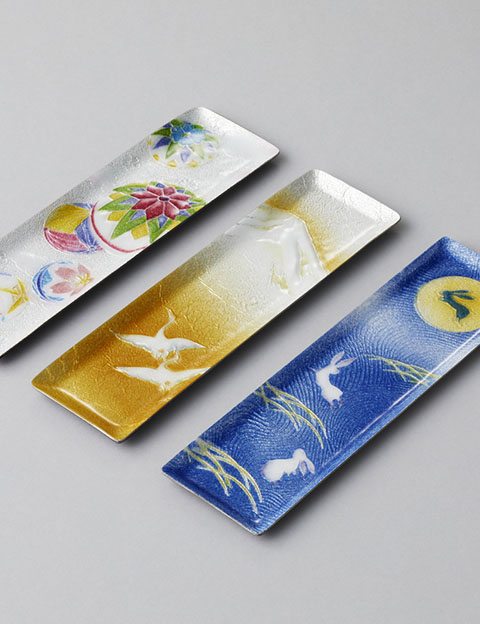OWARI Shippo (Cloisonné)

The origins of Owari cloisonné date back to the Edo era (1600-1868) when the first pieces were made in the area ruled by the Owari clan, in what is now Nagoya. The oldest piece of authenticated Owari cloisonné is a sake cup made in 1833. The skills and techniques of this craft have continued to develop ever since.
The cloisonné craft takes advantage of the fact that enamel melts under extreme heat, similar to the way that pottery glaze melts in a kiln. The main difference is that the base material of cloisonné is metal and the glaze is a glass-like enamel. Owari cloisonné is characterized by designs depicting birds, butterflies, flowers and other plants. Items produced today include flower vases, incense holders, dishes and jewelry boxes.
Feature
When most people think of kiln-fired crafts, pottery may be the only thing that comes to mind. However, cloisonné, which has a metal framework covered with an enamel glaze, is also fired in a kiln. Characteristic designs include nature themes and landscapes.
How to make
The production process involves many steps, including conceiving the design, bisque work, sketching and applying the design, glazing and firing. Each step is performed by hand with careful attention paid to every detail.

